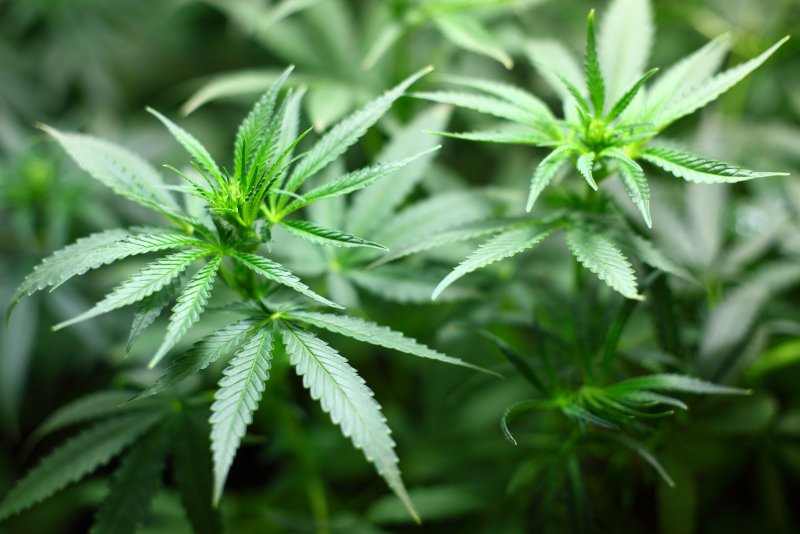Researchers have revealed the genetic evolution responsible for the chemical differences between the cannabis varieties, hemp and marijuana. Photo by 7raysmarketing/
pixabay
Nov. 26 (UPI) -- According to the first-ever cannabis chromosome map, the infusion of genes from invading viruses caused cannabis plants to evolve the bioactive compounds THC and CBD.
Marijuana and hemp are two chemically distinct varieties of the same species, Cannabis sativa. Marijuana contains elevated levels of the psychoactive compound tetrahydrocannabinol, or THC, while hemp produces cannabidiol, or CBD, which is now being used to treat pain relief and anxiety.
By locating the genes responsible for these bioactive compounds within the cannabis chromosome, scientists gained a better understanding of when and how they evolved.
The enzymes that produce THC and CBD are encoded by synthase genes called THCA and CBDA. Both genes are located within the sixth of cannabis' ten chromosomes, and both are surrounded by large swaths of garbled genetic coding leftover from viruses that invaded the species' chromosome several million years ago.
Leftover viral DNA, or retroelements, are found within the genomes of many species, including humans, and their presence can alter the genetic characteristics of an organism.
"Plant genomes can contain millions of retroelement copies," Harm van Bakel, an assistant professor at the Icahn Institute for Data Science and Genomic Technology in New York, said in a news release. "This means that linking genes on chromosomes is analogous to assembling a huge puzzle where three quarters of the pieces are nearly the same color."
Despite the jumbled nature of the plant's chromosome, researchers were able to use genetic mapping and sequencing techniques to locate the synthase genes.
Their analysis of the synthase genes and the sixth chromosome suggests a combination of genetic duplication and the incursion of retroelements caused the ancestral synthase gene to split, yielding to cannabis varieties.
Both THCA and CBDA synthases are nearly identical. But as they became scrambled by invading viral DNA, scientists think they evolved to produce the two different enzymes that yield THC and CBD.
By building the first cannabis chromosome map -- published this month in the journal Genome Research -- and locating the genetic origins of the plant's various characteristics, researchers are making it easier for growers to breed varieties with exact levels of THC and CBD.
"Mainstream science has still not done enough because of research restrictions," said Jonathan Page, researcher at the University of British Columbia and Chief Scientific Officer at Aurora, one of Canada's largest medical cannabis producers. "Legalization and looming ease of research regulation really provide for opportunities for more research to be done. And Canada is leading the way."















